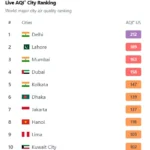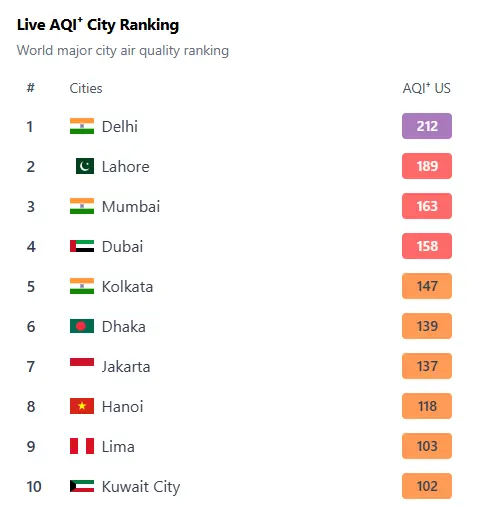The country experienced an extremely hot and dry climate on Friday with the perceived or ‘feels like’ temperature that crosses 50 degrees Celsius in four cities.
The cities in Punjab registered reported a high temperature exceeding 40 ° C in the midst of any rise in the extreme heat wave that has surrounded the country since last week. The heat wave could decrease as the MET office has predicted racing winds and rain in the north and central parts of the country from Friday (today) until Monday.
According to the Department of Meteorology of Pakistan, the highest current temperature was recorded in Sibbi at 47 ° C with extremely hot and dry climate and humidity levels of seven percent.
Karachi recorded a temperature of 39 ° C at 2 pm with a humidity level of 48pc. However, the perceived temperature was recorded at 50.4 ° C. The heat index of the MET office warns about the danger with a probable risk of heat blow, cramps and exhaustion at temperatures of 41-54 ° C.
The temperature in Bahawalpur was recorded as 46 ° C, but the perceived temperature reached 55.8 ° C, the highest in the country. The heat index warns of “extreme danger” with an imminent risk of heat stroke at temperatures above 54 ° C.
The cities recorded the following current temperatures: Faisalabad (46 ° C), Sargodha (46 ° C), Dera Ismail Khan (45 ° C), fine (45 ° C), Lahore (44 ° C), Sialkot (43 ° C), Islamabad (43 ° C), Rawalpindi (42 ° C), Peshwar (41 Muzaffrabad (40 ° C), Quetta (35 ° C) and Gilgit (30 ° C).
However, the temperature received in Sialkot and Lahore was 51.4 ° C and 51.1 ° C, respectively. Other cities also reported the warm climate with the temperature of ‘Feel Like’ in Di Khan at 49.6 ° C, 48.4 ° C in Faisalabad and Sargodha, fine with 47.9 ° C, Islamabad with 44.4 ° C and Rawalpindi with 41.2 ° C.
Several parts of Pakistan are experiencing an intense extreme heat spell, with temperatures that rise well above normal in many regions. The extreme climate pattern highlights the global impact of climate change with continuous increases in temperatures to record levels.









